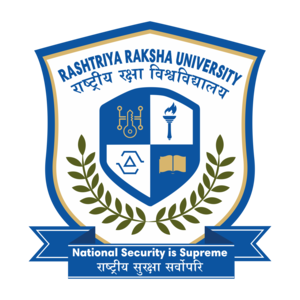
Is Right to Protest a Fundamental Right?
Is Right to Protest a Fundamental Right?
- Dheeraj Diwakar, RMLNLU Lucknow & Rishika Verma, Amity Law School, Gwalior
India has a golden History of Protest, right from the Pre Independence era. It is a result uncountable Protests and certain other things that we are able to breathe in Independent India. Even after Independence our nation has witnessed several Protests. In the year, 1952 a famous Andhra Movement led by Potti Sriramulu demanding separate State for Telegu speaking people. In recent years too there have been several protests which attained worldwide attention i.e. Anti Corruption Protest (2011), Nirbhaya Protest (2012), and CAA Protest (2019-20). Presently, our Nation still is witnessing one Protest, famously called as Farmers Protest.
Protests form an integral part of Democracy and should be respected too.
Protest and Fundamental Rights :-
Part III of the Constitution provides us with a list of rights which are fundamental in nature. The word “Protest” is nowhere mentioned in Fundamental Rights. Even then Article 19 of the Indian Constitution very strongly protects our Right to Protest. Article 19(1) (a) says, “All Citizens shall have the right to freedom of speech and expression”, Article 19(1) (b) says, “All citizens shall have the right to assemble peaceably and without arms” and Article 19(1) (c) says, “All citizens shall have the right to form associations and unions”. They in a combine nature defend, Right to Protest. It is to be understood that these rights are not absolute in nature i.e. authorities can impose certain restrictions on these above mentioned rights.
Apart from providing these fundamental rights, Article 19 also provides with certain restrictions which authorities can impose on these rights. Article 19(2) says, “Nothing in sub-clause (a) of clause (1) shall affect the operation of any existing law, or prevent the state from making any law, in so far as such law imposes reasonable restrictions on the exercise of the right conferred by the said sub-clause in the interests of [the sovereignty and integrity of India,] the security of the State, friendly relations with foreign States, public order, decency or morality, or in relation to contempt of court, defamation or incitement to an offence.” Article 19(3) says, “Nothing in sub-clause (b) of the said clause shall affect the operation of any existing law in so far as it imposes, or prevent the state from making any law imposing, in the interests of [the sovereignty and integrity of India or] public order, reasonable restrictions on the exercise of the right conferred by the said sub-clause.”And Article 19(4) says, “Nothing in sub-clause (c) of the said clause shall affect the operation of any existing law in so far as it imposes, or prevent the State from making any law imposing, in the interests of [the sovereignty and integrity of India or] public order or morality, reasonable restrictions on the exercise of the right conferred by the said sub-clause.”
Overall it can be understood that citizens have Right to protest on one hand whereas on the hand authorities are provided with powers to impose limitations provided that those limitations are reasonable in nature. In Democracy, Right to peaceful protest must be respected but it should also be kept in mind that no right is absolute; similar is this too.
Judicial Interpretation :-
From time to judiciary has properly interpreted, Right to Protest. In a recent judgment of Amit Sahni Vs Commissioner of Police and Ors (Famously known as CAA Protest), the honorable court said that Public ways and spaces cannot be occupied in such a manner and that too indefinitely. The court further said that Democracy and dissent go hand in hand, but then the demonstrations expressing dissent have to be in designated place alone. The honorable court also referred to its previous Judgment of Mazdoor Kisan Shakti Sangathan Vs Union of India and Anr. in which the concerned police authority was directed to devise a proper mechanism for the limited use of the Jantar Mantar area for peacefulprotests and demonstrations and to lay down parameters for the same.
In another case of Himat Lal K. Shah Vs Commissioner of Police, Ahmedabad and Anr the apex court held that State can only make regulations in aid of the right of assembly of each citizen and can only impose reasonable restrictions in the interests of public order.
In the case of Ramlila Maidan Vs Home Secretary, Union of India and Ors the apex court said, “Each citizen of India was entitled to enforce his fundamental rights against Government, subject to any reasonable restrictions as might be imposed under law….Government could, in larger public interest, take a decision to restrict enforcement of freedom, only for a valid, proper and justifiable reason.” The court further said that Citizens have a Fundamental right to assembly and peaceful protest which cannot be taken away by any arbitrary, executive or legislative action.
Our Judiciary has time to time properly directed the meaning of Right to protest by providing landmark judgments. In almost all the cases the honorable court has tried to balance between Right to hold Public Demonstration and Right to commute especially in the case like CAA protests, Jantar Mantar Protests and many others.
Conclusion :-
Protests are basically demands made by a group of individuals in the form of Public demonstrations. Article 19 of the Constitution upheld our right to raise our demand but the condition is that those protests must be peaceful. One have right to protest but while exercising this right one should not cause any inconvenience to other. On the other hand authorities are provided with the power to impose restrictions on them provided that those restrictions must be reasonable in nature. It would not be wrong to say that citizens are only provided with Right to peaceful protest.












